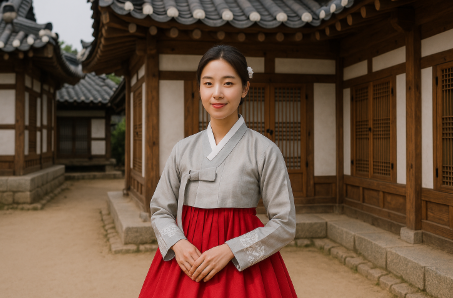Exploring Jeonju Hanok Village: A Cultural Journey in Korea
Introduction to Jeonju Hanok Village
Jeonju Hanok Village is one of the most iconic destinations in South Korea, attracting millions of visitors each year who want to experience the charm of traditional Korean culture. Located in Jeonju, North Jeolla Province, the village is home to more than 800 well-preserved traditional houses called “hanok.” These hanok structures provide a window into the lifestyle, architecture, and artistry of past centuries while coexisting harmoniously with modern amenities. Travelers who visit Jeonju often describe the experience as stepping back in time, where cobblestone alleys, traditional roofs, and cultural performances bring history to life.
The village is not only a historical site but also a vibrant community. Local residents maintain their homes while simultaneously welcoming tourists, offering a unique blend of hospitality and authenticity. Jeonju Hanok Village has become a top SEO keyword for domestic tourism searches, and it is often associated with must-visit attractions in Korea. By combining cultural heritage with culinary excellence, the village ensures that visitors leave with a memorable impression.
Architectural Features of Hanok Houses
Hanok houses are designed with deep respect for harmony with nature, making them a central attraction in Jeonju Hanok Village. The structures are characterized by curved tiled roofs, wooden beams, and paper-covered windows known as “hanji.” The flooring, known as “ondol,” uses a traditional heating system that warms the floor from beneath, ensuring comfort during Korea’s cold winters. Such architectural features illustrate the ingenuity of Korean builders who prioritized both aesthetics and functionality.
One unique aspect is the orientation of hanok houses. They are often built facing south to maximize sunlight and airflow. Courtyards are commonly included, providing a space for family gatherings or seasonal rituals. These design choices are not only practical but also embody principles of balance and harmony rooted in Confucian philosophy. When international travelers search for “traditional Korean architecture,” Jeonju Hanok Village often appears as a leading result because of the well-preserved state of these homes.
Cultural Activities and Experiences
Visitors to Jeonju Hanok Village can participate in a wide range of cultural experiences that highlight Korean heritage. Popular activities include trying on hanbok, the colorful traditional clothing, which enhances the feeling of immersion while exploring the streets. Art workshops for calligraphy, traditional paper crafts, and knot tying are also available, allowing tourists to create unique souvenirs.
Food is another highlight of Jeonju. The city is considered the birthplace of bibimbap, a signature Korean dish mixing rice with vegetables, beef, egg, and chili paste. Culinary classes are often organized in the village, enabling visitors to learn how to prepare this world-renowned dish. Beyond food, traditional music performances, tea ceremonies, and cultural parades occur regularly, reinforcing Jeonju’s identity as a cultural capital.
Practical Travel Information
For travelers planning a trip to Jeonju Hanok Village, accessibility is relatively convenient. From Seoul, buses and KTX high-speed trains provide direct routes, making it possible to reach the village in approximately two hours. Once inside, most of the attractions are within walking distance, and the area is pedestrian-friendly.
Accommodations include hanok guesthouses that allow visitors to stay overnight in traditional rooms. This experience provides a deeper appreciation for Korean lifestyle practices, from sleeping on heated floors to waking up to serene courtyard views. Staying in a hanok is highly recommended for those who want a full cultural experience.
Comparison of Key Features
| Category | Description | Visitor Experience |
|---|---|---|
| Architecture | Traditional hanok houses with curved roofs, ondol heating, and hanji windows | Immersion in authentic Korean design |
| Food | Bibimbap, traditional teas, and Korean street snacks | Unique culinary journey |
| Culture | Hanbok rentals, calligraphy, tea ceremonies | Hands-on cultural immersion |
| Accessibility | Two hours from Seoul by bus or KTX | Easy day trip or overnight stay |
FAQ
Q1: Is Jeonju Hanok Village suitable for families with children?
Yes, the village is very family-friendly. Children enjoy hanbok rentals and cultural workshops designed for beginners.
Q2: Can visitors stay overnight in the village?
Yes, many hanok guesthouses offer overnight stays, providing a unique cultural experience that cannot be replicated in hotels.
Q3: When is the best time to visit Jeonju Hanok Village?
Spring and autumn are ideal because of the mild weather and seasonal festivals that enhance the cultural atmosphere.
Summary
✅ Jeonju Hanok Village preserves over 800 traditional houses and offers immersive cultural experiences.
✅ Visitors can enjoy hanbok rentals, culinary classes, and local performances.
✅ Easily accessible from Seoul, making it a popular domestic travel destination.
✅ Staying in a hanok guesthouse provides an authentic lifestyle experience.
#JeonjuHanokVillage #KoreanCulture #TravelKorea #TraditionalKorea #HanokStay #KoreanArchitecture #VisitJeonju #KoreanFood #JeonjuBibimbap #CulturalHeritage #DomesticTravelKorea #KoreanTradition #ExploreKorea #HistoricKorea #HanokGuesthouse #TravelAsia #KoreanFestival #KTXtoJeonju #FamilyTravelKorea #HanokExperience #KoreaTourism #TravelTipsKorea #CulturalImmersionKorea #VisitSouthKorea #KoreanLifestyle #HanokVillageExperience #SeoulDayTrip #BestofKorea #HeritageTravelKorea #AuthenticKorea
